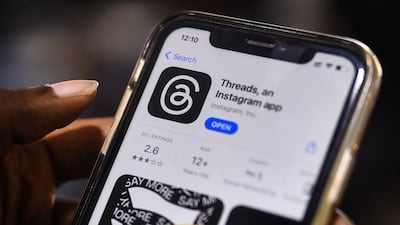Few launches in the technology world will ever match the momentum created by Meta when it launched Threads on July 5.
X, formerly known as Twitter, was reeling from several policies enacted and politics practiced by its new owner Elon Musk. The world seemed ready for something different, and there, seemingly waiting in the wings amid celestial choirs, was Threads, which took advantage of Meta’s Instagram user base, making for a seamless relocation of social media energy and resources. It was a cross between Instagram, Facebook and Twitter, and on paper, it seemed glorious, accumulating 100 million users in just one week.
“It’s just signups,” said Meta’s Adam Mosseri on The Twenty Minute VC podcast. Mr Mosseri, who leads Instagram and Threads platforms for Meta, didn’t shy away from acknowledging potential challenges despite the initial spurt of excitement.
“It’s way easier to make something that people are willing to try than something that people are going to want to continue to use in a month or a year from now,” he added.
Three months later, those fears are somewhat realised. According to web traffic analytics from Similarweb, Threads’ daily active users on Android dropped from 49.3 million worldwide on July 7 to 23.6 million on July 14 and then to 10.3 million on August 7. As the old adage goes, and to simplify what Mr Mosseri said during the podcast, falling in love is easy, but staying in love is difficult.
Why did this happen? Why are users falling out of love with Threads? It’s not Meta’s fault, and I don’t think anybody should be blaming the app either.
Threads does exactly what it’s supposed to. It’s easy to share posts with pictures and video, and it’s even easier to share an article you read from your favourite news site.
So what’s the problem? For one thing, user bases for social apps can be very fickle. What’s hot one minute can quickly be passe the next. Sometimes the exclusivity or underground nature of social platforms fuels the success, and then the mainstream adoption sends it slowly but surely careening into irrelevancy. It’s a story as old as the consumer tech industry, really, but coupled with the widespread adoption apps and speedier downloads, the ride from social media hero to zero has quickened.
Hours after Threads launched, I compared the feeling of the platform’s launch to that of Google +, which had a similarly successful debut in 2011. The only problem? Google+, in the eyes of those who enthusiastically signed up, seemed to be only a slightly different version of Facebook. It limped along from year to year, and Google finally pulled the plug in 2019.
Although Meta might see things differently with its goals for Threads, right now the general public tends to view it as a slightly different version of Twitter. Sure, it’s being updated constantly, and new features added, but at this point, there’s not enough that differentiates it from what’s already available.
One could also point to the cautionary tale of Quibi, a video-based streaming app that had the backing of film producer Jeffrey Katzenberg and former HP chief executive Meg Whitman. Investors forked over billions for the app, celebrities were enlisted and influencers were brought on board, only for the platform to crash and burn.
Where am I going with this social media schadenfreude? I’m simply pointing out that social media platforms, even those introduced by seasoned social media companies and tech titans who create impeccable user interfaces, depend on users for their success.
For all the talk about how technology and social media isolate us, the opposite is often true. These social media platforms create and foster a sense of community.
Unfortunately, right now, the Threads community feels more like a ghost town. That needs to change in order for it to turn a corner.
It’s not necessarily all doom and gloom for Threads. There could be a path forward for Meta as it tries to increase engagement and sustain this social media beast they’ve created. First off, Meta could actually learn a lesson from the demise of Google+. Some of Google+’s most unique features, such as “circles”, allowed users to share content within close groups, a feature that didn’t see much momentum until years after the platform’s demise.
Did Google+ pull the plug too early? We’ll never really know, but there might be a cautionary tale for Meta to keep plugging away improving Threads while ignoring the critics, this author included. There could be light at the end of the tunnel if the company sticks with it.
Meta might also be wise to take a great lesson from LinkedIn, which has exploded in popularity in recent years. It’s easy to forget, but LinkedIn is now 21 years old. It launched in 2003, mainly a site to find jobs and post resumes. Fast forward to 2023, and it’s used for just about everything and goes toe to toe with Twitter and Facebook in terms of social media influence.
For Threads, ultimately the path to success might be patience. In the end, history has shown that you never know how users are going to use the technology you put out there in the world. Right now, it’s quite dormant, but Threads might also be just one user post away from being the next big thing instead of a flash in the pan.


